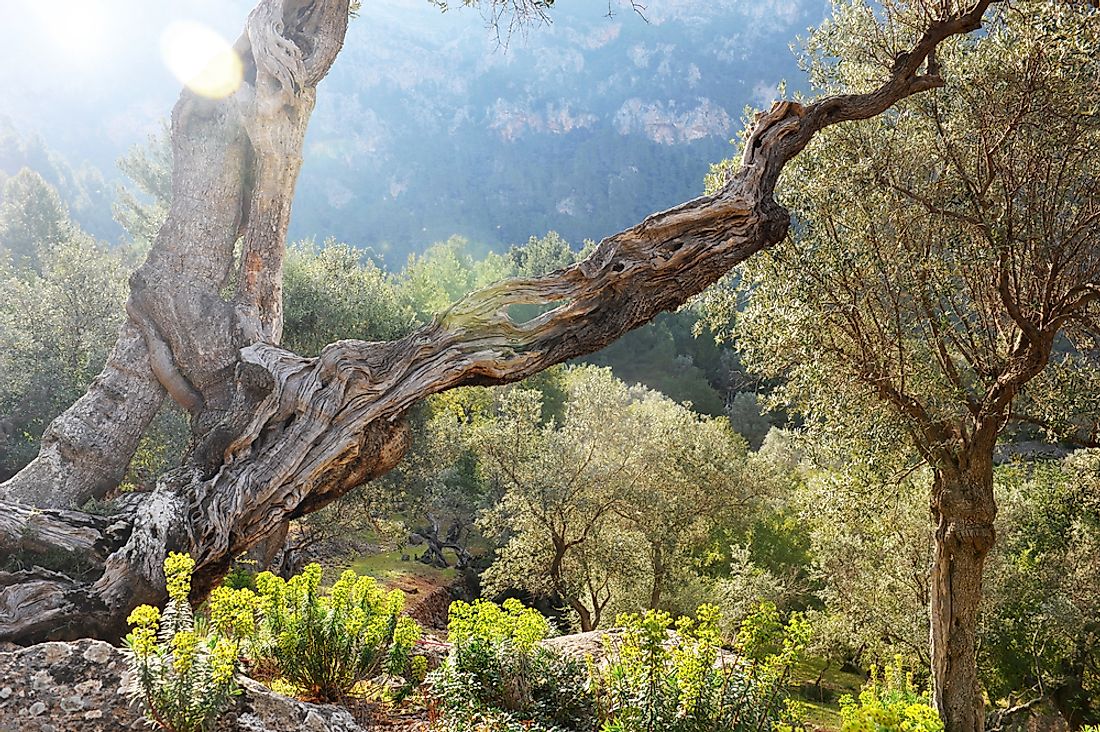What Is A Garrigue?

Garrigue is a type of a low-lying, soft-leaved, leathery, ever-green, secondary community of plants and an ecoregion in the Mediterranean forest. The shrubs are usually discontinuous with open spaces within the bushes. The shrubs are composed of plants such as kermes oak, lavender, thyme, and cistus. Other than the thick thickets of kermes oak that make up most of the shrub, juniper, holm oaks, rosemary, and artemisia can also form part of the garrigue shrubs. The flowers and the evergreen characteristic of the garrigue vegetation are responsible for the colorful trait they possess. The shrubs might also consist of a few isolated trees. Generally, the composition of garrigues are usually members of the mint family of plants, these are mainly the Labiatae or Leguminosae families. These taxonomic families composed of aromatic herbs, dwarf plants, and spices. The shrubs barely attain a height of 0.5 meters.
Habitat and Vegetation
Grrigues is described by the discontinuous bushy plants that mainly grow in the Mediterranean forests, woodlands, and the scrub biome. The plants are mainly common in the Mediterranean basin and propagate on limestone soils and base-rich soils in Southern France around the Mediterranean Basin. Garrigue is usually composed of calcium associated plants. They mostly thrive near the sea coast where the moderated Mediterranean climate provides annual summer drought. The garrigue is usually composed of drought-resistant plants. In Greece, the garrigue is referred to as Phrygana and is very common across Symi area in various forms.
Survival Techniques of Garrigue Plants
Just like several other species of plants, the Garrigue plants usually develop a mechanism to survive in their environment. These mechanisms ensure the plant grows, germinates, and thrives well in its habitat. The development of these survival mechanisms is referred to allelopathy. Allelopathy can be attained mechanically or chemically when the plants produce allelochemicals. Allelopathy helps the garrigue plants to dominant over other neighboring plants, helping them to thrive successfully and overcome competition for resources from other plants. Protective developments of physiological features in garrigues are enhanced by the intensifying solar radiation and clear skies. The features such as white hairs on the leaves protect the plants from excessive transpiration.
Uses of Garrigue
The components of garrigue plants have diverse functions. Many of the garrigue shrubs are used as ornamental plants in many traditional and drought tolerant gardens. The colorful and evergreen trait makes the garrigue’s plants a good composition in gardens for ornamental purposes. Some of the plants growing in the garrigue regions are used as spices and incense because they have a pleasant smell. Grapes are grown in Garrigue regions of France and are used to manufacture wine. Some of the processed garrigue plants can be added to the wine to enhance its taste and smell. For medicinal purposes, some of the plants like lavenders and rosemary possess the ability to cure certain ailments and diseases. In fact, regular consumption of them reduces the risk of developing cancer and many other diseases. Some of the plants can help enhance the digestive system. Their consumption makes the digestive system more efficient since they are responsible for the production of more bile juice.











